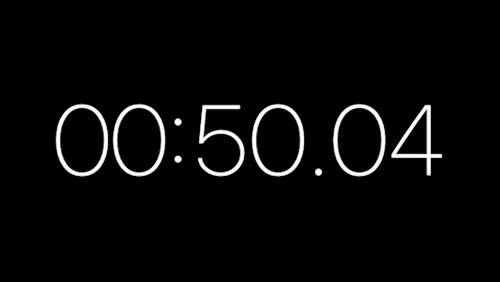Serverless video trimmer & thumbnailer on GCP Functions
June 15th, 2019
Projects

A lot of services exist to dynamically crop, transform, and watermark images on-demand. Thumbor, Imgix, and Cloudinary are some of the more popular ones. These can be very useful for asset management and design, as images don’t need to be pre-processed into multiple formats, dimensions, and crops. A single master or mezzanine file is kept, and all output renditions are generated dynamically and cached.
Such a service doesn’t quite exist yet for video-based content, so I worked on a serverless function that can generate user-specified video clips and thumbnails. A single, long video file kept in a cloud bucket can be trimmed to arbitrary length on-demand, with latencies under a few seconds. Results are cached and subsequent requests are returned from that cache.
The byte-range request method of querying the mezzanine video file puts some requirements on the source, namely that the moov atom must be placed at the front. This helps save a lot of time scanning through the file to the desired trim timestamp. Ffmpeg’s default HTTP input protocol will automatically make correct byte-range requests to the source, only requesting the parts that are desired as specified by the parameters.
Usage
The general format of the URL is https://FUNCTION_URL/{operation}/{parameters}/{source_filename}.
The operation is either a video trim or a thumbnail.
Allowed parameters are fast, width, height, start and end:
fast(optional) does a straight codec copy (-c copyin ffmpeg), avoiding a slow transcoding stepwidthandheight(optional) specifies output width and height in pixels. For thumbnails, a percentage can be specified.startandend(optional) are the start and finish timestamps in seconds.
Example live URLs
These examples are on a source video of a timer counting from 00:00.
Return a thumbnail 200px wide at 50 seconds: https://asia-northeast1-personal-projects-225512.cloudfunctions.net/video-segmentation/thumbnail/start:50,width:200/5_minute_timer.mp4
Return a thumbnail at 50% duration (original video size): https://asia-northeast1-personal-projects-225512.cloudfunctions.net/video-segmentation/thumbnail/start:50%/5_minute_timer.mp4
Return a video clip from 10.5 seconds to 20.5 seconds, compressed to 240p: https://asia-northeast1-personal-projects-225512.cloudfunctions.net/video-segmentation/trim/start:10.5,end:20.5,height:240/5_minute_timer.mp4
Return a video clip from 10.5 seconds to 20.5 seconds (original video size): https://asia-northeast1-personal-projects-225512.cloudfunctions.net/video-segmentation/trim/start:10.5,end:20.5,fast/5_minute_timer.mp4
Advantages & disadvantages
The pseudo-streaming / byte-range approach to the input file has several key advantages:
- Not limited by Lambda / GCF limitations on storage capacity, which for longer videos can be easy to hit
- Trimming LONG videos (>5GB) is much faster, as the entire original file does not need to be downloaded first, only the relevant section
- The video is being transcoded as it is being downloaded
Of course, serverless also comes with its own advantages:
- Massive scalability & concurrency
- No need to provision servers
- Reduced costs, because functions run only when requested
This approach also comes with disadvantages (some pretty big):
- The first uncached request will take some time before a response is generated
- Not all video formats support pseudo/progressive streaming
- Requires generation of signed URLs as it relies on HTTP byte range requests
- Transcoding can be slow, as even the largest GCF configurations are very weak for video processing (max 2 vCPU)
- GCF as of this time does not support caching with a CDN layer in front natively, so a regional GCS bucket is used instead as a asset store
- 301/302/307 replies for existing cached assets is another set of handshakes for the client, slightly increasing load times
Possible improvements
- Switch from HTTP triggers to a pub/sub model
- Put behind Firebase Hosting and use it as a CDN
- Improve cold start times
- Improve ffmpeg start up times with a barebones static build
- More video options such as watermarking, smart cropping
- Improved HTTP byte range request behavior
Technologies used
- python
- Google Cloud Datastore
- Google Cloud Storage
- Google Cloud Functions
- ffmpeg
- ffprobe
- Flask
- terraform
Deployment
- From
gcloudcommand line:gcloud functions deploy serverless-ffmpeg-segmentation --runtime python37 --region=asia-northeast1 --trigger-http --entry-point=trim --memory=2048MB - Using terraform: run
terraform initthenterraform applyfrom theterraformfolder. Will set up artifact bucket and automatically zip and create a functionvideo-segmentation.
Notes
I ran into issues with the static build of ffmpeg in that it errors with a segfault if doing a overlay filter with a seeked HTTP streaming input. I believe it is related to the timestamp being negative after seeking on a pseudo-streaming input, but more testing is needed. No issues with the build installed through apt.
Github
Project is on Github.